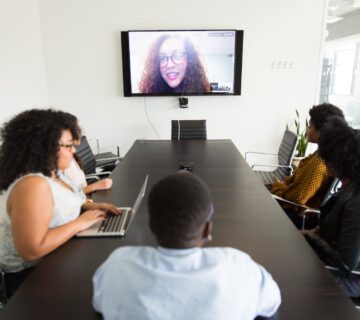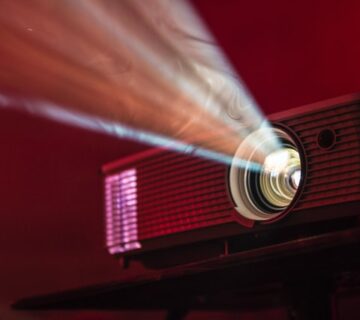Installing Modern A/V Solutions in Historic Buildings
Some things, like jean jackets, fireplaces, and—for some reason—karaoke, never go out of style.
Historic buildings, when tastefully reimagined and updated, belong in this group. Regardless of their appeal, retrofitting these structures with modern technology presents a challenge for many architects and A/V professionals. Succeeding in this task requires countless hours of planning and a willingness to pursue creative solutions. With that in mind, architects must collaborate with reliable A/V providers who can deliver high-quality A/V solutions without damaging the building’s unique features.
In this blog, we explore how A/V experts can help architects preserve the character of historic buildings while providing technology that prepares those buildings for the future of work.
A/V Design Tips for Architects
When designing custom A/V systems, A/V professionals must consider not only user experience and accessibility but also how the systems will navigate the architectural constraints of the buildings in which they will be installed. Many hours of analysis and planning go into designing these systems, so it comes as no shock that the most effective and cost-efficient A/V infrastructures result from early collaborations between A/V professionals and architects.
Architects work with A/V professionals for a variety of reasons. Obviously, A/V experts can install custom A/V systems tailored to the specific needs of each project, but they are also uniquely positioned to help architects design efficient environments that encourage collaboration and limit distractions. From consulting on furniture arrangements and acoustic solutions to advising on the most effective ways to optimize meeting rooms for video conferencing, A/V professionals can provide invaluable consultation services throughout the planning and construction processes.
How to Install Modern A/V Solutions in Historic Buildings
Each restoration project requires custom A/V solutions from a reliable A/V provider. Before you retrofit a historic building with modern technology, consider these helpful A/V tips.
-
Hire an A/V Expert to Assess the Building’s Needs
Bringing in A/V experts at the beginning of a project helps architects eliminate the unnecessary expenses that come with treating A/V solutions as an afterthought. In other words, consulting with A/V partners before the construction phase helps architects plan with essential technology in mind. A/V professionals can suggest attainable A/V solutions based on what the building’s electrical infrastructure is able to support, how the building will be used after it’s repurposed, and who will be interacting with the provided technology.
-
Share Restoration Requirements With Your A/V Partner
The U.S. Department of the Interior and many local governing bodies provide strict requirements and guidelines for rehabilitating historic buildings. Discuss these standards with your A/V provider in the planning stages of your project. Doing so will ensure that the A/V system doesn’t interfere with protected architectural features.
-
Gain Permission from All Project Stakeholders
After your A/V partner assesses the building and designs an A/V system tailored to its idiosyncrasies, it’s important to gain approval from all project stakeholders. When restoring historic structures, it’s often necessary to submit proposals to project managers, building owners, boards of directors, and local governing bodies. This review process takes time, but it will eliminate potential hiccups caused by lack of buy-in or insufficient communication.
-
Consult With Your A/V Partner Early and Often
Plans inevitably change throughout the life of each project. Even minor changes, such as rearranged furniture or relocated outlets, may affect the A/V system’s design, so it’s important to maintain open channels of communication with your A/V team. Remember, coordinating with A/V professionals throughout the design and construction processes allows for a fruitful exchange of expertise, eliminating the unnecessary costs that come with delaying A/V system integration.
A Trusted A/V Partner of Indiana Architects
To transform a historic building into a modern office or retail environment, architects have to collaborate with A/V professionals who can retrofit the structure with modern technology that doesn’t interfere with the building’s unique features.
Since 1992, AV Designers has worked closely with Indiana architects to provide user-friendly A/V solutions for boardrooms, conference rooms, lobbies and office, retail, and dining spaces. Need an experienced A/V partner for your next project? Contact AV Designers today.






